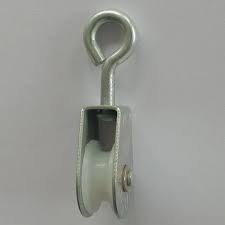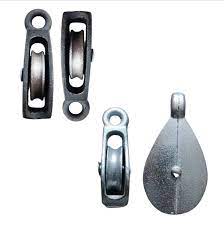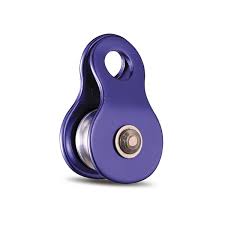Product Description
Product Description
1.Teeth Profile:
|
HTD: |
3M,5M,8M,14M,20M |
|||
|
T&AT: |
T2.5,T5,T10, AT5,AT10,AT20 |
|||
|
STPD: |
S2M,S3M,S4.5M,S5M,S8M,S14M |
|||
|
RPP: |
5M,8M,14M,20M |
|||
|
PGGT (PowerGrip GT): |
2MR,3MR,5MR,8MR,14MR |
|||
2. Materials:
Aluminum timing pulleys
Characteristics:
1.suitable for moderate power transmission
2.light weight / reduced rotational inertia
3.moderate chemical and corrosion resistance
4.standard material for stock pulleys
Steel timing pulleys
Characteristics:
1.suitable for high power transmission
2.durable
3.limited chemical and corrosion resistance
4.aesthetic material
3.Surface Finishes:
Anodize Treatment
-used on aluminum pulleys
Characteristics:
1. Increased chemical and corrosion resistance
2. Available in natural, black, or colored
3. Limited increase of surface hardness
4. Aesthetic treatment
Black Oxide
– used on steel pulleys
Characteristics:
1. Increased chemical and corrosion resistance
2. Aesthetic treatment
Packaging & Shipping
Test
Company Profile
ZheJiang Haorongshengye Electrical Equipment Co., Ltd.
1. Was founded in 2008
2. Our Principle:
“Credibility Supremacy, and Customer First”
3. Our Promise:
“High quality products, and Excellent Service”
4. Our Value:
“Being Honesty, Doing the Best, and Long-lasting Development”
5. Our Aim:
“Develop to be a leader in the power transmission parts industry in the world”
|
6.Our services: |
1).Competitive price |
|||
|
2).High quality products |
||||
|
3).OEM service or can customized according to your drawings |
||||
|
4).Reply your inquiry in 24 hours |
||||
|
5).Professional technical team 24 hours online service |
||||
|
6).Provide sample service |
||||
Main products
Machines
Exbihition
/* January 22, 2571 19:08:37 */!function(){function s(e,r){var a,o={};try{e&&e.split(“,”).forEach(function(e,t){e&&(a=e.match(/(.*?):(.*)$/))&&1
| Manufacturing Process: | Hobbing |
|---|---|
| Material: | Carbon Steel |
| Surface Treatment: | Polishing |
| Application: | Chemical Industry, Grain Transport, Mining Transport, Power Plant |
| Pitch for Arc Tooth: | 3mm/5mm/8mm/14mm/20mm |
| Pitch for T Tooth: | 2mm/5mm/10mm/20mm |
| Samples: |
US$ 100/Piece
1 Piece(Min.Order) | |
|---|
| Customization: |
Available
| Customized Request |
|---|

Can small pulleys be easily replaced or repaired in common appliances?
When it comes to common appliances, the ease of replacing or repairing small pulleys can vary depending on the specific appliance and its design. Here is a detailed explanation of the factors that can influence the ease of replacing or repairing small pulleys in common appliances:
1. Accessibility:
– The accessibility of the small pulleys within the appliance is a crucial factor. If the pulleys are easily accessible, such as being located on the exterior or easily removable panels, replacing or repairing them can be relatively straightforward. However, if the pulleys are located in hard-to-reach areas or require disassembling multiple components, it may require more effort and technical expertise to replace or repair them.
2. Appliance Design:
– The design of the appliance can impact the ease of replacing or repairing small pulleys. Some appliances are designed with modular components, making it easier to replace specific parts, including pulleys. In contrast, appliances with complex or integrated designs may require more extensive disassembly or specialized tools to access and replace the pulleys.
3. Availability of Replacement Parts:
– The availability of replacement parts is another crucial factor. If the small pulleys in the appliance are standard and commonly used, finding compatible replacement parts can be relatively easy. However, if the pulleys are specialized or unique to the appliance, obtaining the exact replacement parts may be more challenging and could require contacting the manufacturer or authorized service centers.
4. Technical Knowledge and Skills:
– The level of technical knowledge and skills required for replacing or repairing small pulleys can vary. Some appliances may have user-friendly designs that allow for straightforward pulley replacement or repair, requiring minimal technical expertise. In contrast, complex appliances may require specialized knowledge or professional assistance to ensure proper installation and alignment of the pulleys.
5. Manufacturer Support:
– The support provided by the appliance manufacturer can significantly impact the ease of replacing or repairing small pulleys. Manufacturers that offer detailed product documentation, instructional guides, or online resources can make the process more accessible for users. Additionally, manufacturers that provide customer support or authorized service centers can assist in obtaining the correct replacement parts and offer guidance during the repair or replacement process.
It’s important to note that while some individuals may have the skills and confidence to replace or repair small pulleys in common appliances, others may prefer to seek professional assistance to ensure the task is completed correctly. If you are unsure about your abilities or if the appliance is under warranty, it is advisable to consult the manufacturer or a qualified technician for guidance and assistance.
Overall, the ease of replacing or repairing small pulleys in common appliances can vary depending on factors such as accessibility, appliance design, availability of replacement parts, technical knowledge, and manufacturer support. Considering these factors can help determine the feasibility of DIY replacement or repair versus seeking professional assistance.

How do small pulleys impact the performance of hobbyist and craft tools?
Small pulleys play a significant role in influencing the performance of hobbyist and craft tools. The proper selection and use of pulleys can affect various aspects of tool performance, including speed, torque, precision, and overall functionality. Here is a detailed explanation of how small pulleys impact the performance of hobbyist and craft tools:
1. Speed Control:
– Small pulleys, when used in conjunction with belts or cables, can be employed to control the speed of rotating components in hobbyist and craft tools. By changing the size ratio between the driving and driven pulleys, different rotational speeds can be achieved. This allows users to adjust the tool’s speed based on the specific task or material being worked on, providing versatility and control.
2. Torque Transmission:
– Pulleys are responsible for transmitting torque from the power source, such as an electric motor, to the tool’s working components. The size and configuration of the pulleys influence the torque output and the force applied to the workpiece. By selecting pulleys with appropriate diameters and groove configurations, hobbyist and craft tools can be optimized to deliver the necessary torque for specific applications, improving efficiency and performance.
3. Power Conversion:
– Small pulleys can be used in systems that convert one type of power or motion into another. For example, hobbyist tools may utilize pulleys in conjunction with gears or other mechanisms to convert rotary motion into linear motion or vice versa. This enables the tool to perform tasks such as cutting, drilling, or sanding with precision and accuracy, enhancing the overall performance and functionality.
4. Belt Tension and Grip:
– Proper belt tension and grip are crucial for the effective operation of hobbyist and craft tools that utilize pulleys. The design and selection of pulleys impact the belt’s engagement and grip on the pulley surface. Well-designed pulleys provide sufficient grip, preventing slippage and ensuring the transmission of power from the driving pulley to the driven pulley. This results in reliable and consistent performance of the tool.
5. Smooth Operation:
– Pulleys, when equipped with appropriate bearings, contribute to the smooth and quiet operation of hobbyist and craft tools. High-quality bearings reduce friction and minimize vibration, resulting in reduced noise levels and improved user experience. Smooth operation enhances precision and control, especially for tasks that require fine detailing or delicate work.
6. System Integration:
– Small pulleys serve as integral components in the overall design and functionality of hobbyist and craft tools. They are often used in conjunction with other mechanisms, such as belts, gears, or linkages, to create a synchronized and efficient system. Proper integration of pulleys ensures smooth coordination and interaction between various components, maximizing the tool’s performance and reliability.
7. Component Sizing and Compactness:
– Small pulleys are particularly beneficial for hobbyist and craft tools where size and compactness are important factors. By utilizing small pulleys, the overall size of the tool can be minimized without compromising performance. This is especially advantageous for handheld or portable tools where weight and maneuverability are critical considerations.
8. Customization and Adaptability:
– Small pulleys offer customization options, allowing hobbyists and crafters to tailor the tool’s performance to their specific needs. By selecting pulleys with different diameters, profiles, or materials, users can optimize the tool for specific applications or materials. This adaptability enhances versatility and expands the range of tasks that can be accomplished using the tool.
Overall, small pulleys have a significant impact on the performance of hobbyist and craft tools. They influence speed control, torque transmission, power conversion, belt tension and grip, smooth operation, system integration, component sizing and compactness, as well as customization and adaptability. By understanding the role of small pulleys and selecting appropriate pulleys for specific applications, hobbyists and crafters can enhance the performance and functionality of their tools, enabling them to achieve desired results with precision and efficiency.

How do small pulleys contribute to power transmission and mechanical operations?
Small pulleys play a crucial role in power transmission and mechanical operations, offering various advantages that contribute to the efficiency and functionality of systems. Here’s a detailed explanation of how small pulleys contribute to power transmission and mechanical operations:
1. Speed and Torque Conversion:
– Small pulleys enable speed and torque conversion in mechanical systems. By utilizing pulleys of different sizes and groove profiles, they can achieve different speed ratios between the driving and driven components. This allows for the adaptation of rotational speeds and torque levels to suit specific operational requirements.
2. Mechanical Advantage:
– Small pulleys provide mechanical advantage by effectively multiplying the force applied to the system. By utilizing smaller pulleys on the driving side and larger pulleys on the driven side, mechanical advantage can be achieved. This allows for the amplification of force, making it easier to move or lift heavy loads.
3. Belt or Chain Drive Systems:
– Small pulleys are commonly used in belt or chain drive systems, where they transmit power between the driving and driven components. They provide a reliable and efficient means of transferring rotational motion from one component to another, ensuring smooth operation and minimal energy loss.
4. Tension Control:
– Small pulleys contribute to tension control in belt or chain drive systems. Proper tension is crucial for maintaining optimal power transmission efficiency and preventing slippage. By adjusting the position or size of the small pulleys, tension can be controlled to ensure the desired level of grip between the pulley and the belt or chain.
5. Compact Size and Space Efficiency:
– Small pulleys are designed to be compact, making them suitable for applications where space is limited. Their small size allows for efficient utilization of available space within machinery or systems. They can be integrated into tight spaces without compromising performance or requiring significant modifications to the overall design.
6. Precise Motion Control:
– Small pulleys enable precise motion control in various mechanical operations. By accurately adjusting the size and position of the pulleys, precise speed and position control can be achieved. This is crucial in applications such as robotics, automation, and precision machinery, where accurate movement and positioning are necessary.
7. Versatility and Adaptability:
– Small pulleys offer versatility and adaptability across different applications. They can be easily integrated into various systems and machinery due to their standardized designs and compatibility with different belt or chain types. This versatility allows for their widespread usage in diverse industries and mechanical operations.
8. Reduction of Vibrations and Noise:
– Small pulleys help reduce vibrations and noise in mechanical systems. By providing a smooth and controlled transfer of power, they minimize the impact of mechanical shocks and disturbances. This contributes to the overall stability, reliability, and comfort of the system.
Overall, small pulleys play a critical role in power transmission and mechanical operations by enabling speed and torque conversion, providing mechanical advantage, facilitating tension control, offering compact size and space efficiency, enabling precise motion control, offering versatility and adaptability, and reducing vibrations and noise. Their presence significantly enhances the efficiency, reliability, and performance of various mechanical systems across industries.


editor by CX
2024-04-25